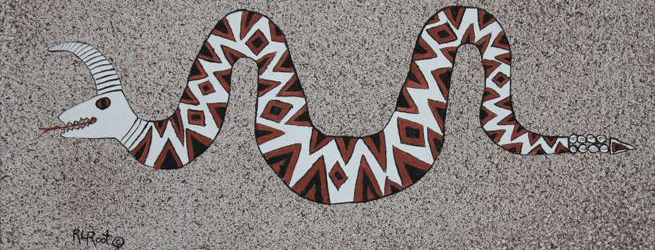Murder by Death
I read cozy and historical mysteries, a bit of Paranormal/UF, and to mix it up, I read science and gardening books on occasion.
16 Tasks of the Festive Season: Eleventh Square - Soyal / Dōngzhì Festival
The Soyal Solstice Ceremony

Also called the Great Feast of the Winter Solstice, it is celebrated by the Southwest Pueblo, Zuni and Hopi tribes of Native Americans. Held on the winter solstice, or shortest day of the year, the purpose of the Soyal ceremony and ritual is to bring the sun back from its long winter slumber. The Hopi celebrate over a period of 16 days which starts with prayers and supplications and ends with a feast and Kachina Dance.
 The Southwestern Pueblo, Zuni and Hopi tribes celebrated Soyal to turn the sun back toward its summer path and renew the life stages for the coming year. The Hopi and Zuni believe that the sun god has traveled the furthest distance from the tribe at this point, so warriors and other powerful members of the tribe were tasked to entice the sun back. This they did with Kachina dances; aKachina was a powerful being or spirit who, if given due veneration and proper respect, could use their powers for the good and well being of the people, bringing rainfall, healing, fertility, or protection.
The Southwestern Pueblo, Zuni and Hopi tribes celebrated Soyal to turn the sun back toward its summer path and renew the life stages for the coming year. The Hopi and Zuni believe that the sun god has traveled the furthest distance from the tribe at this point, so warriors and other powerful members of the tribe were tasked to entice the sun back. This they did with Kachina dances; aKachina was a powerful being or spirit who, if given due veneration and proper respect, could use their powers for the good and well being of the people, bringing rainfall, healing, fertility, or protection.
The Soyal ceremony is preceded by gifts of feathers bound with cotton or other fibers which are exchanged among members of the tribe. As night falls, the Hopi gather in a kiva, a sacred underground prayer space, bringing their gifts of feathers to decorate the space while people dance, pray, give offerings to the gods, and play music. The celebrants also perform an elaborate dance which mimics the struggle between darkness and light, with the sun god ultimately emerging in triumph.
 One of the distinctive images of Soyal is an effigy of a plumed snake, which represents the forces of darkness which try to swallow the sun. During the ceremony, people make offerings to the snake which are intended to appease it so that it does not swallow the sun god. The sun is represented by a traditional shield, carried in the Soyal dance.
One of the distinctive images of Soyal is an effigy of a plumed snake, which represents the forces of darkness which try to swallow the sun. During the ceremony, people make offerings to the snake which are intended to appease it so that it does not swallow the sun god. The sun is represented by a traditional shield, carried in the Soyal dance.

Book themes for Soyal: Read a book set in the American Southwest / the Four Corners States (Arizona, Colorado, New Mexico, and Utah), –OR– a book that has a Native American protagonist.
Tasks for Soyal: Like many Native American festivities, Soyal involves rituals such as dances. What local / religious / folk traditions or customs exist where you live? Tell us about one of them. (If you can, post pictures for illustration.) –OR– Share a picture you’ve taken of a harvest setting or autumnal leaf color.
The Dongzhi Festival

A festival celebrated in China and East Asia during the winter months. Dongzhi is literally translated to mean ‘the extreme of winter’, and the festival is designed to celebrate the return of longer daylight hours and an increase of positive energy. The origins of this festival can be traced back to the yin and yang philosophy of balance and harmony, and this is symbolized by the I Ching hexagram fù 復 which means ‘returning’ (of the longer days, of the light, of warmth).
 Although the Dongzhi Festival isn’t an official holiday in China, historically farmers and fishermen would take time off from work and celebrate with their families with a lavish meal. During these get-togethers, families in southern China often make and eat tangyuan, balls of glutinous rice, occasionally brightly coloured, cooked in a sweet or savoury broth. In northern China, people typically indulge in dumplings, either plain or stuffed with hearty meats.
Although the Dongzhi Festival isn’t an official holiday in China, historically farmers and fishermen would take time off from work and celebrate with their families with a lavish meal. During these get-togethers, families in southern China often make and eat tangyuan, balls of glutinous rice, occasionally brightly coloured, cooked in a sweet or savoury broth. In northern China, people typically indulge in dumplings, either plain or stuffed with hearty meats.
Dongzhi is the last festival of the year, occurring only six weeks before the Chinese New Year. However, some people believe that this festival marks a turning point, and that everybody becomes one year older on this day.
Book themes for Dōngzhì Festival: Read a book set in China or written by a Chinese author / an author of Chinese origin; or read a book that has a pink or white cover.
Tasks for Dōngzhì Festival: If you like Chinese food, tell us your favorite dish – otherwise, tell us your favorite desert. (Recipes, as always, welcome.)



